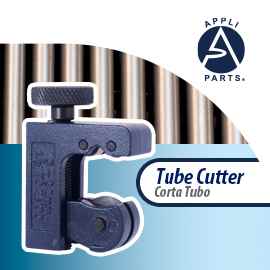Understanding the Refrigeration Cycle: How it Keeps Your Food Fresh
Refrigeration is a crucial part of modern life. We all rely on it to safely store our food and preserve its freshness.
But have you ever wondered how your fridge works? It’s all thanks to the refrigeration cycle, a complex process that involves several components working together in harmony.
In this blog, we will take you through the basics of the refrigeration cycle, how it keeps your food fresh, and the different parts of the cycle that make it all possible.
What is the refrigeration cycle and how does it work?
The refrigeration cycle is a process by which heat is extracted from an enclosed space and moved to another location. In a fridge or air conditioner, this space is the interior of the unit, and the other location is the outside of the unit. The refrigeration cycle uses refrigerants, chemicals that are designed to evaporate and condense at specific temperatures, to move heat from one place to another.
The cycle begins with the compressor, which compresses the refrigerant into a high-pressure gas. This gas passes through a condenser, where it releases its heat and condenses into a high-pressure liquid.
From there, it moves through an expansion valve, which lowers the pressure of the liquid and causes it to evaporate into a low-pressure gas.
This gas then passes through an evaporator, where it absorbs heat from the enclosed space and returns to the compressor to start the cycle over again.
The different parts of the refrigeration cycle and their functions
The compressor is the heart of the refrigeration cycle. It pumps the refrigerant through the system and raises its pressure.
The condenser is used to release the heat from the high-pressure gas.
The expansion valve lowers the pressure of the liquid, which causes it to evaporate into a low-pressure gas.
The evaporator is where the low-pressure gas absorbs heat from the enclosed space.
All of these parts work together to create a cycle that removes heat from the enclosed space and moves it to the outside of the unit.
The importance of refrigerants in the refrigeration cycle
Refrigerants play a critical role in the refrigeration cycle.
They are designed to absorb and release heat at specific temperatures, which allows them to move heat from one location to another.
However, some refrigerants, such as CFCs, are harmful to the environment and can contribute to ozone depletion. As a result, many countries have phased out the use of CFCs in favour of more environmentally-friendly alternatives such as HFCs.
The benefits of regular maintenance on the refrigeration cycle
Regular maintenance is essential to keep your fridge running efficiently and prevent breakdowns. This includes cleaning the condenser coils, checking the door seals, and changing the air filter (for air conditioners). Neglecting maintenance can cause your unit to work harder and use more energy, leading to higher bills and shorter lifespan.
The refrigeration cycle is a complex process that involves several components working together to remove heat from an enclosed space and move it to another location.
Understanding the refrigeration cycle can help you appreciate the mechanics of your fridge or air conditioner, and empower you to keep it running smoothly for years to come.
By maintaining your unit and choosing environmentally-friendly refrigerants, you can ensure that your food stays fresh while minimizing your impact on the environment.





